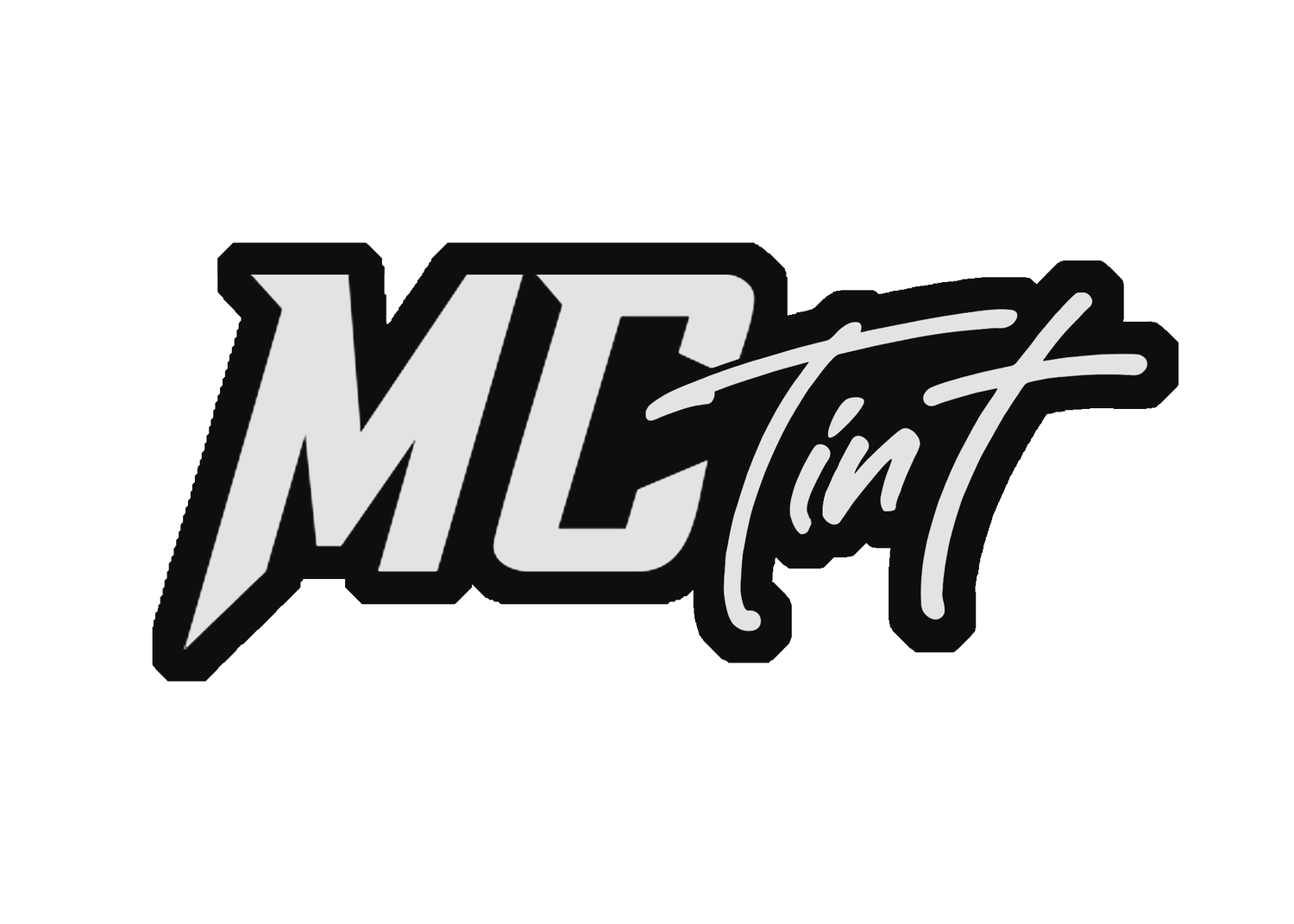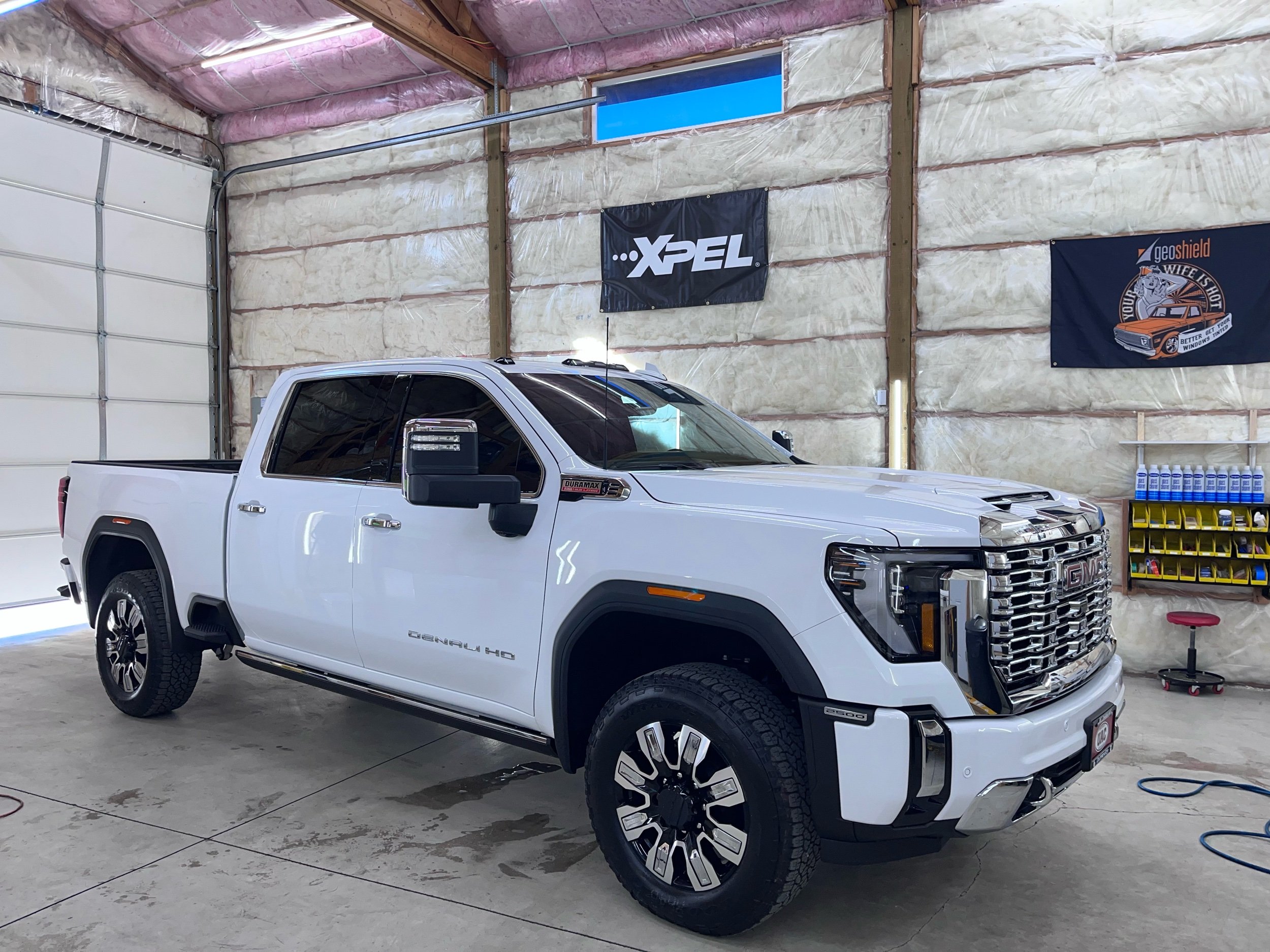-
Everyday Vehicles
-
Residential or commercial window tint and security film
-
Ceramic coatings are applied to vehicles’ painted surfaces, giving them a hard, durable, and high gloss finish. This can be thought of as a sacrificial layer between the environment and your paint. Additionally, the coatings are extremely hydrophobic making coated vehicles much easier to keep clean. We only offer Xpel Fusion plus Premium 8-year coating.
-
PPF or paint protection film is a invisable, clear material applied to a vehicles paint to prevent rock chips and scratches. This material is also self sealing to scratches. PPF is the ultimate solution to keeping your paint beautiful.
Offered Services
MC Tint proudly offers the best Xpel Prime automotive, Xpel Vision home/office, and Xpel fusion plus ceramic coatings
Why Get your car or truck windows tinted?
When it comes to enhancing the style and functionality of your vehicle, window tinting is a popular choice among car enthusiasts. While there are various options available, ceramic window tint has gained significant popularity over metalized film due to its superior benefits. In this blog post, we will explore the advantages of ceramic window tint and why it is an excellent choice for your vehicle.
1. Heat Rejection:
Ceramic window tint is known for its exceptional heat rejection capabilities. Unlike metalized film, ceramic tint does not rely on metallic particles to reflect heat. Instead, it utilizes advanced ceramic technology that blocks infrared (IR) radiation, which is responsible for the majority of heat buildup in your vehicle. This means that ceramic tint can effectively reduce the interior temperature, keeping you and your passengers comfortable during hot summer days.
2. UV Protection:
One of the primary reasons people opt for window tinting is to protect themselves and their vehicle interiors from harmful ultraviolet (UV) rays. While metalized film offers a certain level of UV protection, ceramic window tint provides even greater defense against these harmful rays. Ceramic tint blocks up to 99% of UV rays, safeguarding your skin from potential damage and preventing your car's interior from fading or cracking over time.
3. Reduced Glare:
Driving during bright, sunny days can be challenging due to excessive glare. Ceramic window tint significantly reduces glare by minimizing the amount of light that enters your vehicle. This not only enhances your driving experience by improving visibility but also reduces eye strain, increasing overall safety on the road.
4. Enhanced Privacy:
Privacy is another essential factor to consider when it comes to window tinting. Compared to metalized film, ceramic tint provides better privacy by creating a darker and more opaque appearance. This prevents prying eyes from peering into your vehicle, protecting your valuables and ensuring your privacy.
5. No Interference with Electronics:
Metalized film, due to its metallic composition, can interfere with electronic signals such as GPS, cell phone reception, and radio frequencies. Ceramic window tint, on the other hand, does not contain metallic particles and thus does not disrupt these signals. This ensures that you can enjoy uninterrupted connectivity and maintain the functionality of your electronic devices.
Conclusion:
If you are considering window tinting for your vehicle, ceramic window tint offers numerous benefits over metalized film. From superior heat rejection, UV protection, reduced glare, enhanced privacy, to non-interference with electronics, ceramic tint is a smart investment that enhances both the comfort and aesthetics of your vehicle. Make sure to choose a reputable professional installer to ensure the job is done correctly, maximizing the benefits of ceramic window tint for years to come.
Why Get solar film on your home/office?
Window film offers a range of benefits, from enhancing privacy to energy savings. Here are some key advantages of installing XPEL window film in your home:
1. Energy Efficiency: Window film acts as a thermal barrier, reducing the amount of heat coming in through the windows. This helps minimize the need for excess heating or cooling. As a result, quality window film can help lower your energy consumption and utility bills.
2. Better UV Protection: XPEL window film blocks up to 99% of ultraviolet UV rays harmful to safeguard your skin against UV radiation, in addition to protecting your furniture, flooring, and other valuables against fading or discoloration caused by sun exposure.
3. Reducing Sun Glare: Sun glare can ruin the atmosphere of a room. Window film reduces glare from sunlight, which enhances visibility and creates a more comfortable living environment. A benefit if you're working on your computer, watching TV, or simply relaxing.
4. Improving Privacy and Security: Certain types of window film offer enhanced privacy by preventing outsiders from seeing inside your home. Additionally, window film can strengthen the glass, making it more resistant to shattering and improving overall security.
Tax Benefits:
There's a delicate balance in owning a home. It's an accomplishment, a source of security, and a place to cultivate a family unit. There is harmony in white picket fences and pencil-drawn growth charts on door frames that adds value to owning a home immeasurable in terms of dollars and cents. However, the dark side comes in maintaining a home, which is often the source of many homeowners' fear and stress. Thankfully, the recent Inflation Reduction Act of 2023 offers good news for homeowners by providing several tax incentives, including a tax credit on window film installation.
Under the Inflation Reduction Act, residential homeowners who install window film on their homes may qualify for a tax credit. Designed to be an incentive to encourage homeowners to invest in energy-saving products like UV protective and infrared deflecting window film to help reduce their carbon footprint in efforts for a more sustainable future.
According to the policy, homeowners can claim a tax credit to cover up to 30% of the cost of installing window film on their homes up to $1,200. If you spend $3,000 on window film installation, you could be eligible for a tax credit of $900. However, it's important to note that the tax credit applies only to qualified window film installations that meet specific energy efficiency criteria, like XPEL .
Get in contact to learn more!



